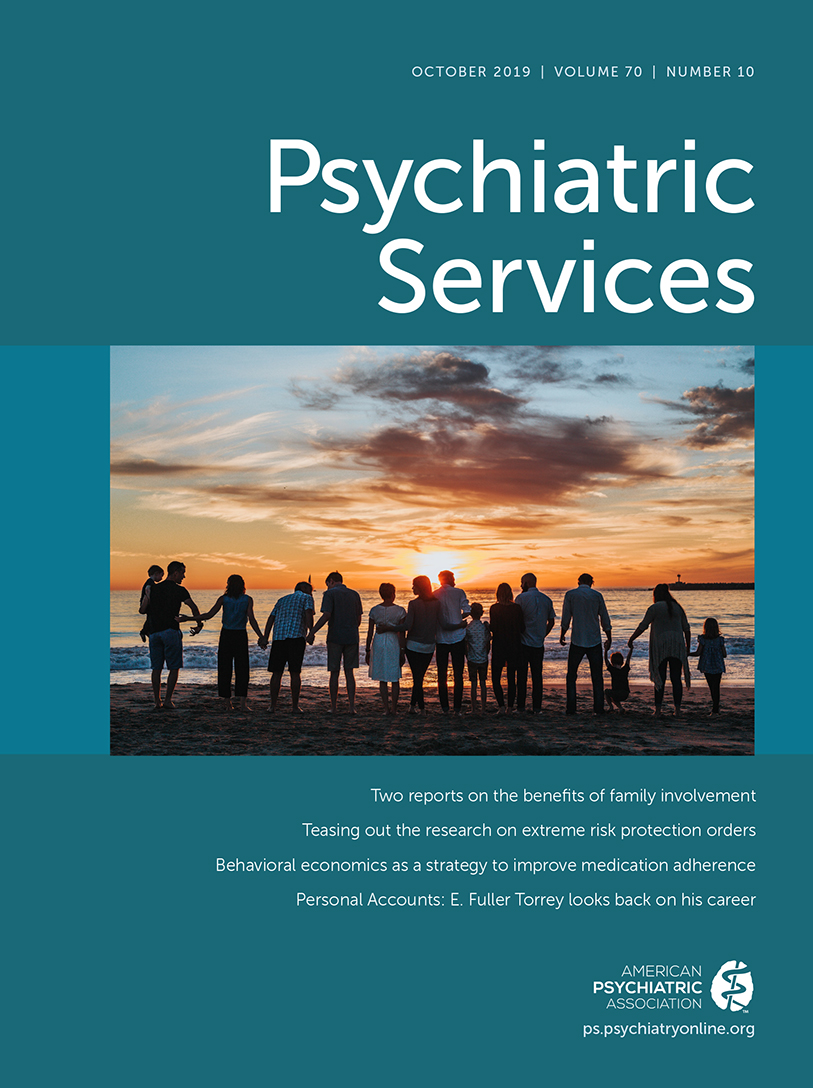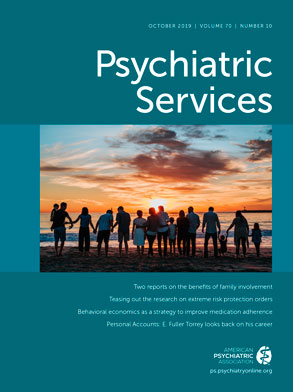Caseload size and daily patient contact volume are standard measures of quantitative performance within ambulatory medical services, including those in behavioral health. This aspect of clinician workload is an ongoing area of concern among both clinicians and administrators, who typically have different ways of defining and measuring success, despite sharing the goal to serve patient populations.
This trend of expectation to increase volume of patients seen has been traditionally understood as having a financial motive. Health care systems struggle to expand market share and must optimize billings to maintain fiscal viability, placing pressure on clinicians to carry higher caseloads and meet increasing daily service expectations. This problem is particularly acute for organizations serving populations with complex clinical and social problems requiring professional case management, which is typically insufficiently reimbursed through public funding mechanisms.
Expectations to increase caseload also result from the increasing demand for behavioral health services that has resulted from improving access to health insurance and mental health parity. Demand on clinicians is further increased by a parallel decrease in workforce, which is mostly due to psychiatrists who retire from practice (
1) and to those leaving practice or reducing clinical hours because of dissatisfaction.
A high daily volume of patient visits, and resultant decreased time allotted per encounter, erode clinical alliance and results in lower quality of care, loss of individualized care, and lower patient and clinician satisfaction (
2). Although there are, as yet, no studies specifically relating caseload or daily volume to clinical outcomes in behavioral health settings, there is mounting evidence from primary care, which shares with psychiatry the issues of workforce shortage and patients with complex social needs (
3). Furthermore, excessive volume expectation has been shown to be a leading cause of physician exhaustion and burnout (
4), which itself is correlated with lower-quality care in community mental health settings (
5).
After considering relevant literature, we deliberate below on reports regarding caseloads and service volume gathered from electronic discussions and similar reports among members of the American Association of Community Psychiatrists (AACP). Using that information, we discuss how quality of care may be affected and offer suggestions for research to adapt to the health care environment.
Previous Efforts to Estimate Workload
There is a small literature coinciding with early attempts at introducing public-sector behavioral health managed care in the 1990s that examined caseload size and daily service volume in mental health care environments. Goldman and colleagues (
6) broke ground by attempting to estimate clinic caseloads with a stepwise mathematical technique based on clinic census and number of psychiatrists. They approached the misty realm of clinical complexity—or instability—by integrating psychiatrists’ self-reports of the percentage of such “active cases” within caseloads and giving them more weight in the caseload calculus.
Baker (
7) calculated caseloads using historic monthly patient volume data and clinicians’ estimates of needed frequency while accounting for individual clinician differences in time not spent on direct patient care. Morrison (
8) extended the previous work using differing metrics to measure workload (number of discrete patients seen per year versus a cross-sectional caseload) and asserted that the presence of nonpsychiatric clinicians improved caseload capacity for psychiatrists.
Those authors each found different caseload estimates, ranging from 165 to 438. None assumed that their methodologies constructed ideal workloads or reflected high-quality care. However, they all included case complexity, clinical instability, and frequency of emergencies as factors affecting patient load capacity. For example, in Baker’s project, the clinic with the lowest caseload exclusively served people who were homeless.
Data From AACP Members
In an effort to clarify anecdotal concern among psychiatrists regarding caseload, we asked AACP members to note the caseload size of a full-time staff psychiatrist in public-sector–oriented mental health outpatient clinics. These data were accumulated through the organization’s electronic discussions and from its board of directors between October 2015 and May 2018 (
Table 1).
This small, illustrative convenience sample reveals caseloads and daily-volume expectations that are far from uniform. Most notable are the spread of caseload (from a low of 40 patients to a high of “unlimited”) and volume expectations, ranging from six to 25 daily clinical contacts.
What’s Next?
The wide range of survey data highlights the absence of standards or an evidence base to guide caseload and volume expectations in organized settings. Several tools and approaches can be used to improve service access: redesigning workflow (
2), using telepsychiatry and medication groups, employing nonphysician providers, using collaborative care models that divert patients with less complex treatment needs to primary care services, and creating more residency training opportunities. However, the relentlessly increasing demand combined with currently progressive workforce supply shortages indicate a pressing need to determine guidelines for care delivery that can meet financial and access demands without compromising quality of care.
An important and yet overlooked step to addressing “increased demand” is recognizing that current standards of delivery are fairly arbitrary and do not reflect the value of individualized, person-centered care. To wit, distinct from other medical specialties, psychiatric encounters traditionally have been time based. Outside the context of clinical crises, psychiatric clinics generally give the same frequency and duration of appointments to every patient. The historical standard of the weekly “50-minute hour” has shifted to 30 minutes monthly, primarily because of fiscal need, with initial protest but eventual acceptance by clinicians. Most agree that a growing trend of uniform “15-minute med checks” every 2–6 months is unacceptable, but we have no way to defend that position or to know whether the model might, indeed, be adequate for some patients.
Creating a standard of care requires an understanding of how delivery models affect quality (
9). To assess service needs and appropriately allocate resources, health services research is required to understand how duration and frequency of clinical encounters relate to outcomes and, crucially, how that relationship varies depending on diagnosis, acuity, comorbidities, psychosocial needs, and important clinician factors.
In developing and refining funding models, it is critically important to recognize that person-centered mental health care involves various therapeutic session time lengths and skills. Although value-based reimbursement is a hopeful longer-term prospect, current reimbursement models must be refined to accommodate ranges in diagnostic complexity, psychosocial needs, and clinician management of these factors within a process that promotes engagement, shared decision making, and individualized treatment planning.
Indeed, other medical specialties enjoy reimbursement that recognizes their unique skills. For example, surgical procedures are reimbursed differentially and are scheduled for different lengths of time depending on the complexity of the procedure and the skill needed. Similarly, psychiatry requires an index of the kind and number of applied skills mobilized in a session.
Researchers, together with experienced psychiatrists, are needed to develop and validate an index of technical complexity and skill, which could be used to rework the formula that gauges a clinician’s real-time effort beyond “clinical complexity,” as currently defined in Current Procedural Terminology (CPT) evaluation and management coding, independent of the rigidly time-based “psychotherapy” coding.
The formula would embrace complexity in the patient’s presentation, including quantified ratings of factors such as typically labor-intensive diagnostic categories, safety risk, social and occupational functioning, and actualities that intervene as social determinants. It also must reflect the clinical work of crafting a unique language necessary for individual patient engagement, shared decision making to address recovery goals, and individualized outcomes.
Research linking the nature of the clinical relationship to outcomes has shown a small but statistically significant effect (
10). Developing and maintaining a clinical relationship is at the bedrock of care, and it unfolds within a certain moment-to-moment alchemy involving cultural factors, clinician social intelligence, humility and empathy, knowledge, shared goals, and technical skills.
Transforming alchemy to chemistry is a difficult process. The index would also have to accommodate the variability in skills and perception of effort between clinicians. While tackling challenges of excessive clinical documentation, it would somehow quantify the amount of intellectual and empathic energy mustered in a clinical encounter, recognizing that accumulated emotional load on practitioners (sometimes characterized as negative countertransference or vicarious trauma) influences the effectiveness of their work. It would therefore factor in clinical process challenges. It should be informed by aggregate data from qualitative interviews with psychiatric care providers of wide-ranging training and experience.
A reliable and validated index of “complexity + effort cum engagement” within the CPT coding structure would provide a reimbursement model that promotes person-centered, individualized treatment over the current system, which favors high-volume, uniformly brief encounters. To assess appropriateness of the caseload, this index would allow for more reliably quantifying time needed for a clinician’s “active patients” whose needs are most complex. It would also help clinicians determine the type of interventions offered and formulate the actual time and frequency needed for encounters.
Conclusions
There is a need to confront the deleterious effects of unreasonable expectations for ever higher numbers of patient encounters. Doing so requires reassessing the funding of psychiatric resources to create systems that promote person-centered care while accounting for workforce shortages, increasing demand for access to care, and fiscal realities. Critical steps will be to develop service delivery guidelines with outcome metrics to appropriately allocate resources together and to develop reimbursement models that acknowledge complexity and skill. This project’s depth is by no means shallow, and in our view, organized psychiatry can have an important role in helping to coordinate the effort of forming collaborations of health services researchers, health economists, clinical and administrative leaders, and people with lived experience of mental illness. With these steps and with stakeholder participation, we can design quality-based and sustainable guidelines for psychiatric service delivery.

